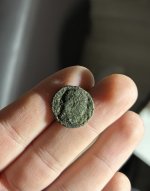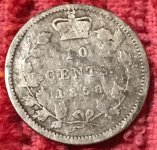PotBelly Jim
Hero Member
- Dec 8, 2017
- 900
- 2,993
- Primary Interest:
- Other
This is one of many examples why I reject the Holmes account, why would Waltz even bother with the loss of some fine gold dust when his ore was so rich? And Waltz stated that there was enough gold there to make many people rich.
and, the threat of Apache attacks was still to be contended with and rockers make a lot of noise.
Many of the Holmes Manuscript stories appear to be modified snippets of tales already in circulation. Not sure why, as there are quite a few possibilities as to how this may have occurred.
One part that makes me wonder is the part about Apache Jack. Pretty much the same as Bark's story. How the story got to Holmes is a mystery to me, as I doubt Bark would have given him the time of day. If it's true that Brownie wrote it after his mom passed in 1943, and Bark's notes didn't get distributed until later, then the stories are independent of each other.
Another weird aspect is that Brownie doesn't seem to know the name of the rancher in Prescott when he relates the Apache Jack story. As we know, it was Jim Bark's buddy, George Scholey. The strange part is later in the Holmes Manuscript, Brownie mentions George Scholey by name, but doesn't connect him to the Apache Jack story...it's almost as if he knows who George Scholey is, but doesn't know he was the rancher from Prescott he talked about earlier.
In the same section, Brownie says he recieved the ore from Waltz. I've often wondered if the "Scholey disconnect" and the statement of receiving ore directly from Waltz, indicates that his father Dick actually wrote that section.




 Looked more like Black Queen ore than the real Black Queen ore did...and nothing like Mammoth ore...go figure...
Looked more like Black Queen ore than the real Black Queen ore did...and nothing like Mammoth ore...go figure...



